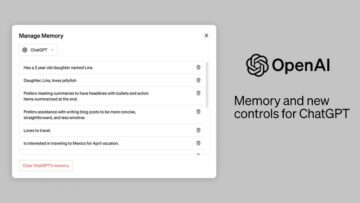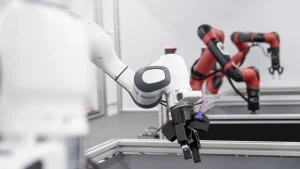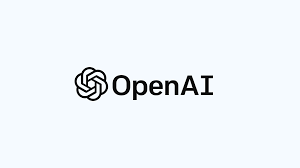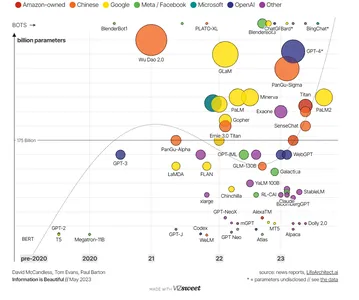For generating our final Data Drift analysis, the chi-squared test can be applied for the categorical features to identify data drift.
import numpy as np
import pandas as pd
df=pd.read_csv('Churn_Modelling.csv')
df.head()

df.drop(['RowNumber','CustomerId','Surname'],axis=1,inplace=True) df_numerical=df.iloc[:,[3,4,5,9]] df_numerical.head()

df_salary_low=df_numerical[df_numerical['EstimatedSalary']<=10000] #splitting the data to analyze the difference in both the datasets
df_salary_high=df_numerical[df_numerical[‘EstimatedSalary’]>10000]
from scipy import stats p_value = 0.05 rejected = 0 for col in df_numerical.columns: test = stats.ks_2samp(df_salary_low[col], df_salary_high[col]) if test[1] < p_value: rejected += 1 print("Column rejected", col) print("We rejected",rejected,"columns in total")

Thus, the K-S test has rejected the Tenure and Estimated Salary columns which means that the statistical properties of these two columns for both the datasets are not identical.
2) Population Stability Index:
It compares the distribution of the target variable in the test dataset to a training data set that was used to develop the model.

Steps for calculation:
1) Divide the expected (test) dataset and the actual (training dataset) into buckets and define the boundary values of the buckets based on the minimum and maximum values of that column in train data.
2) Calculate the % of observations in each bucket for both expected and actual datasets.
3) Calculate the PSI as given in the formula
a) When PSI<=1
This means there is no change or shift in the distributions of both datasets.
b) 0.1< PSI<0.2
This indicates a slight change or shift has occurred.
c) PSI>0.2
This indicates a large shift in the distribution has occurred between both datasets.
def calculate_psi(expected, actual, buckettype='bins', buckets=10, axis=0):
def psi(expected_array, actual_array, buckets): def scale_range (input, min, max): input += -(np.min(input)) input /= np.max(input) / (max - min) input += min return input
breakpoints = np.arange(0, buckets + 1) / (buckets) * 100 breakpoints = scale_range(breakpoints, np.min(expected_array), np.max(expected_array)) expected_percents = np.histogram(expected_array, breakpoints)[0] / len(expected_array) actual_percents = np.histogram(actual_array, breakpoints)[0] / len(actual_array) def sub_psi(e_perc, a_perc): if a_perc == 0: a_perc = 0.0001 if e_perc == 0: e_perc = 0.0001
value = (e_perc - a_perc) * np.log(e_perc / a_perc) return(value)
psi_value = np.sum(sub_psi(expected_percents[i], actual_percents[i])
for i in range(0, len(expected_percents)))
return(psi_value)
if len(expected.shape) == 1: psi_values = np.empty(len(expected.shape)) else: psi_values = np.empty(expected.shape[axis])
for i in range(0, len(psi_values)): psi_values = psi(expected, actual, buckets)
return(psi_values)
## Calculate psi for features
psi_list = []
top_feature_list=df_salary_high.columns
for feature in top_feature_list: # Assuming you have a validation and training set psi_t = calculate_psi(df_salary_high[feature], df_salary_low[feature]) psi_list.append(psi_t) print('Stability index for column ',feature,'is',psi_t)

3) Model-Based Approach
A Machine Learning-based model approach can also be used to detect data drift between two populations.
We need to label our data which has been used to build the current model in production as 0 and the real-time data gets labeled as 1. We now have to build a model and evaluate the results.
If the model gives high accuracy, it means that it can easily discriminate between the two sets of data. Thus, we could conclude that a covariate shift has occurred and the model will need to be recalibrated. On the other hand, if the model accuracy is around 0.5, it means that it is as good as a random guess. This means that a significant data shift has not occurred and we can continue to use the model.
The disadvantage of this model is that every time new input data is made available, the training and testing process needs to be repeated which can become computationally expensive.
4) Using specialized drift detection techniques such as Adaptive Windowing (ADWIN):
The Adaptive Windowing (ADWIN) algorithm uses a sliding window approach to detect concept drift. Window size is fixed and ADWIN slides the fixed window for detecting any change on the newly arriving data. When two sub-windows show distinct means in the new observations the older sub-window is dropped.
A user-defined threshold is set to trigger a warning that drift is detected. If the absolute difference between the two means derived from two sub-windows exceeds the pre-defined threshold, an alarm is generated. This method is applicable for univariate data.
from skmultiflow.drift_detection import ADWIN
adwin = ADWIN()
for col in df_numerical.columns: data_stream=[] a = np.array(df_salary_low[col]) b = np.array(df_salary_high[col]) data_stream = np.concatenate((a,b))
# Adding stream elements to ADWIN and verifying if drift occurred for i in range(len(data_stream)): adwin.add_element(data_stream[i]) if adwin.detected_change(): print('Change detected in data: ' + str(data_stream[i]) + ' - at index: ' + str(i) +'for column:' + col)

5) Page-Hinkley method:
This drift detection method calculates the mean of the observed values and keeps updating the mean as and when new data arrives. A drift is detected if the observed mean at some instant is greater than a threshold value lambda.
min_instances – defaults to 30
The minimum number of instances before detecting change.
delta – defaults to 0.005
The delta factor for the Page Hinkley test.
threshold – defaults to 50
The change detection threshold (lambda).
alpha – defaults to 0.9999
The forgetting factor is used to weigh the observed value and the mean.
from river.drift import PageHinkley
np.random.seed(12345)
ph = PageHinkley(threshold=10,min_instances=10)
# Update drift detector and verify if change is detected
for col in df_numerical.columns: data_stream=[] a = np.array(df_salary_low[col]) b = np.array(df_salary_high[col]) data_stream = np.concatenate((a,b)) for i, val in enumerate(data_stream): in_drift, in_warning = ph.update(val) if in_drift: print(f"Change detected at index {i} for column: {col} with input value: {val}")
Handling data drift in production
In production, there are multiple ways to respond to data drift.
Some of the methods which are generally followed in the industry are:
1) Blindly update model:
This is a naïve approach. There is no proactive drift detection. Models are periodically retrained and updated with recent data. Without drift detection in place, it is difficult to estimate the time interval for re-training and model re-deployment.
2) Training with weighted data:
When a new model is trained instead of discarding old training data, use weight inversely proportional to the age of data.
3) Incremental learning:
As new data arrives, the models are continuously retrained and updated. As a result, the model is always adapting to the changes in the data distribution. This approach will work with machine learning models which allow incremental learning one instance of data at
Conclusion
There are various ways to detect and handle drift. Custom alerts and thresholds can be also set up by the user to trigger alerts for drift. In Cloud platforms e.g in Azure Machine Learning, you can use dataset monitors to detect and alert for data drift.
Thus, Model Monitoring and Drift Detection is an important part of the ML Model Lifecycle which needs to be optimized for successful and efficient deployments of models into production. Identifying any kind of drifts in the data in real-time and a proper strategy to handle such drifts is very crucial for our models to give better results with time.
- '
- 100
- 11
- 7
- 9
- Absolute
- algorithm
- analysis
- analytics
- around
- article
- Azure
- build
- change
- Cloud
- Column
- continue
- Current
- data
- data set
- Delta
- Detection
- develop
- dropped
- Feature
- Features
- good
- head
- High
- HTTPS
- identify
- index
- industry
- IT
- large
- learning
- machine learning
- Media
- ML
- model
- monitoring
- Other
- Platforms
- population
- Production
- real-time
- Results
- scientists
- set
- shift
- Size
- Stability
- stats
- Strategy
- successful
- Target
- techniques
- test
- Testing
- time
- Training
- Update
- value
- weigh
- Work
- XML











